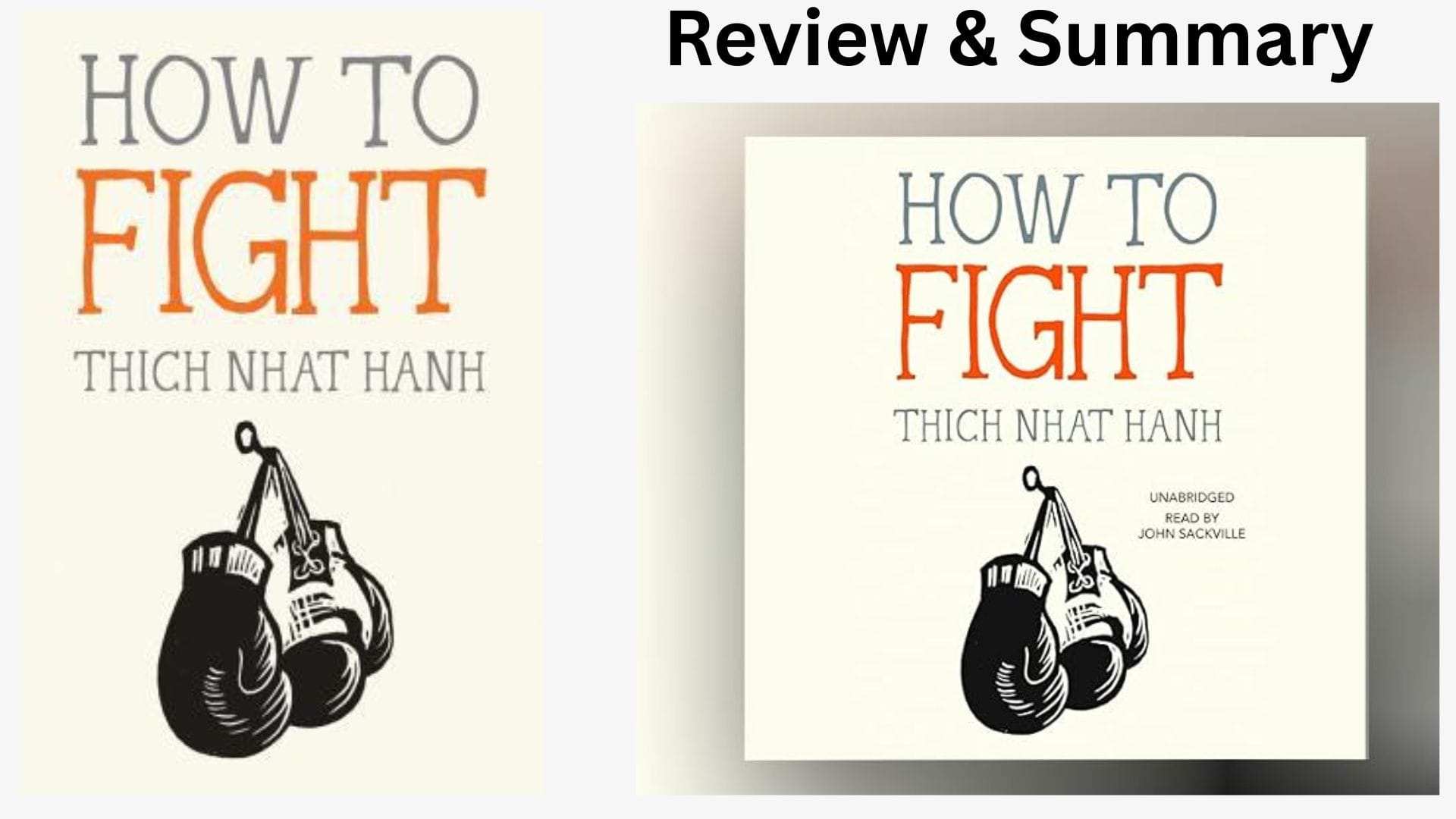This book, the sixth in the best-selling Mindfulness Essentials series, takes readers back to the fundamentals of mindfulness practice and is written by famous Zen teacher Thich Nhat Hanh.
When discussing how we express our feelings of rage, impatience, despair, and delusion, Nhat Hanh applies his trademark humour, clarity, and compassion. Thich Nhat Hanh shows us just how to change our perplexity and longing in short meditations that are complemented with amusing sumi-ink illustrations.
By learning to manage our pain, we may assist others in doing the same and bring about peace between family members, friends, and even countries. The pocket-sized book How to Fight has unique two-colour artwork by Jason DeAntonis, a California artist.
Read about The Book of Forgiving – Desmond Tutu with this detailed guide!
About the Author
Thich Nhat Hanh was a well-known peace activist and spiritual teacher worldwide. He was born in Vietnam in 1926, and at sixteen years old, he converted to Zen Buddhism. In addition to teaching for seven decades, he wrote over 100 books, which have sold over four million copies in the US alone.
He brought the mindfulness movement to Western society with his lectures on Buddhism as a means of social and political change, and he was exiled from Vietnam in 1966 for advocating peace.
The largest Buddhist monastery in Europe and the hub of an expanding global network of mindfulness practice centres, the transnational Plum Village Community of Engaged Buddhism, was founded by him in France. He died in 2022 at the age of 95 in Tu Hieu, his ancestral temple in Hue, Vietnam.
Review
The NPR Bestseller List, the San Francisco Chronicle Bestseller List, the Boston Globe Bestseller List, the LA Times Bestseller List, and the extended New York Times Bestseller List have all included The Mindfulness Essentials.
I’ll start by mentioning the one thing that irritates me. Many concepts are repeated, and you may think, “He said this before, but this is just a different story to say this now.” It’s a bit irksome. But
Read about The Book of Awakening – Mark Nepo with this detailed guide!
Since one manner of expressing the same topic could not resonate with you, I can see why he uses a different approach. In other words, you must read the entire book and take out the ideas that appeal to you. Naturally, my brain took over the tree trunk and branch passage, even if I didn’t think I cared about it. I won’t tell you what it means either. All you can do is read it.
Although I’m not a saint after reading it, I will admit that this book has been somewhat helpful. You have the ability to recognise when you’re upset and make an effort to calm down. I’m not going to tell you yet, but I do have a favourite statement that I think about every day. You know, you have to try not to be angry all the time.
As an aside, I strongly disagreed with one or two of the paragraphs (making amends with those who had already passed away). There was another section about smiling at someone who is upset with you, but I don’t have the book with me.
I’m going to break my principles since the book is worth reading, but I believe you’ll be clocked or worse if you do that to a vengeful man who acts as though he has no problem with violence. Read the people in the room. Recognise when you’re truly in danger.
The final section offers strategies for handling your anger (I believe most of these strategies are included in the first 90 pages or so, but I’m getting off topic). The recommendations were okay. I’m not interested in the peace note or the peace treaty.
I can disagree with him and utilise his ideas to support my own view; therefore, I’m not penalising points for this. I believe Thich Nhat Hanh will accept your proposal as long as it lessens your pain without causing sorrow to others.
Read about Book Think and Grow Rich by Napoleon Hill with this detailed guide!
Summary
The issue with the way we handle disagreement is that we are too preoccupied with arguing with the other person rather than recognising how we feel about the circumstance. This is analogous to chasing after the guy who set your house on fire instead of going back to extinguish the fire.
The first thing we should do when we sense rage building within of us is to stop. Come to a halt and resume breathing. Under these circumstances, refrain from saying or doing anything.
It is quite powerful to be able to stop when you are angry. Instead of wrath and pain, it allows us to disseminate understanding and compassion throughout the world.
It is not a sign of repression to concentrate on your breathing when you are angry. It’s an act of consciousness. We may accept our rage with compassion if we acknowledge it. By practicing mindfulness, we may simply greet our anger instead of battling it.

